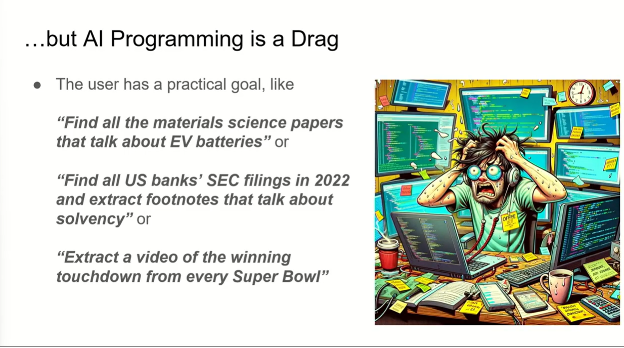In the rapidly evolving world of artificial intelligence (AI) and large language models (LLMs), it is easy to overlook the logistics involved in deploying these systems. While many view these systems as creative tools, there are technical requirements and challenges that must be addressed to ensure they run effectively in different environments. Semantic analytics applications have emerged as a tool to help with declarative optimization, ensuring that programs utilizing LLMs or neural networks run efficiently.
Drawing parallels to the evolution of data handling practices in the 1970s, experts in the field emphasize the importance of keeping systems running smoothly amidst rapid environmental changes. The constant evolution of hardware, services, tools, and resources presents challenges for programmers and handlers tasked with managing systems that perform cognitive functions. The demands for speed, cost-effectiveness, and quality add complexity to the process of building and running these systems.
MIT Research Scientist Michael Cafarella highlights the challenges faced by programmers in ensuring that their systems are fast, cost-effective, and high-quality while processing large volumes of data objects. Declarative optimization plays a crucial role in addressing these challenges, as it involves hypothesizing and testing multiple ways to implement a program before selecting the most efficient and effective option. The dynamic nature of AI infrastructure requires programmers to constantly adapt and optimize their systems to meet ever-changing demands.
In a recent presentation, a multi-modal real estate tool and a system called Palimpzest were showcased as examples of how declarative optimization can streamline operations and automate tasks such as prompt writing and data labeling. These tools serve as automation engines that can adjust to changing circumstances, offering increased efficiency and effectiveness. Declarative optimization is seen as a key element in the development of the next generation of AI systems as researchers work to overcome limitations in computing power and other resources.
As the field of AI continues to advance, the need for efficient and effective systems becomes increasingly crucial. Declarative optimization offers a solution to the challenges posed by rapidly evolving environments and complex technological requirements. By leveraging semantic analytics applications and other tools, programmers and handlers can ensure that their systems are optimized for speed, cost, and quality, ultimately paving the way for the next wave of AI innovation. In a world where the only constant is change, the ability to adapt and optimize systems will be essential for success in the evolving landscape of AI technology.













